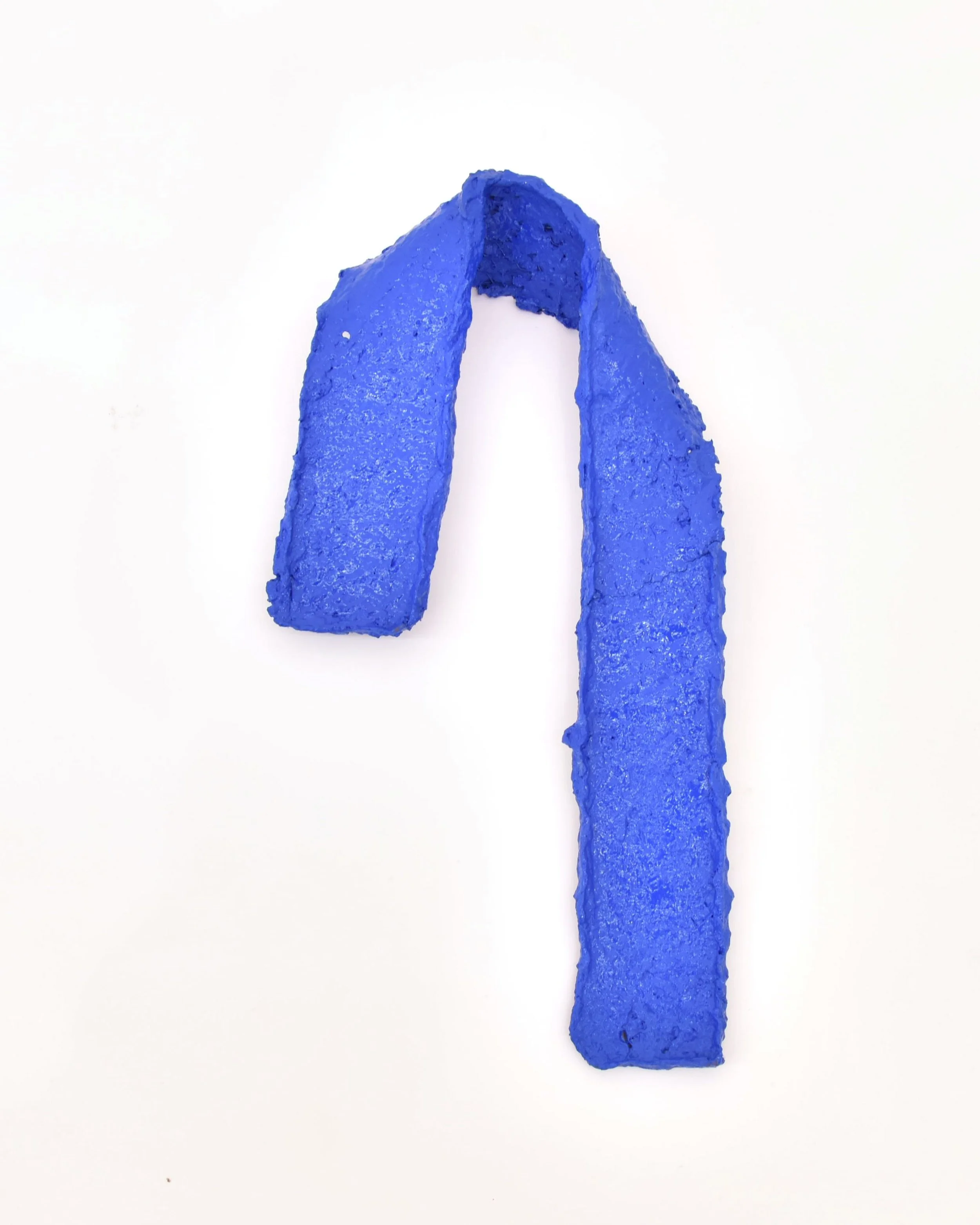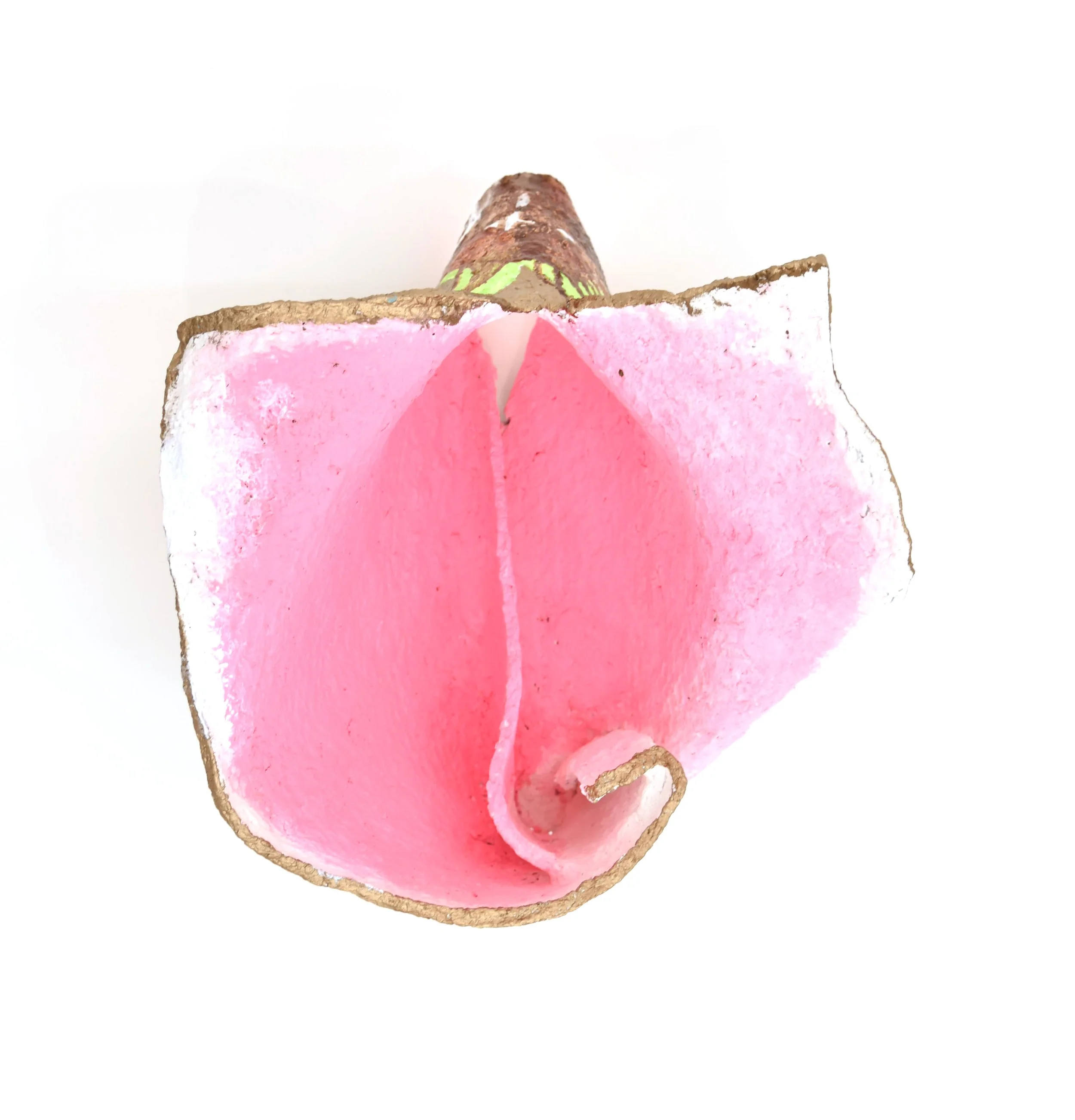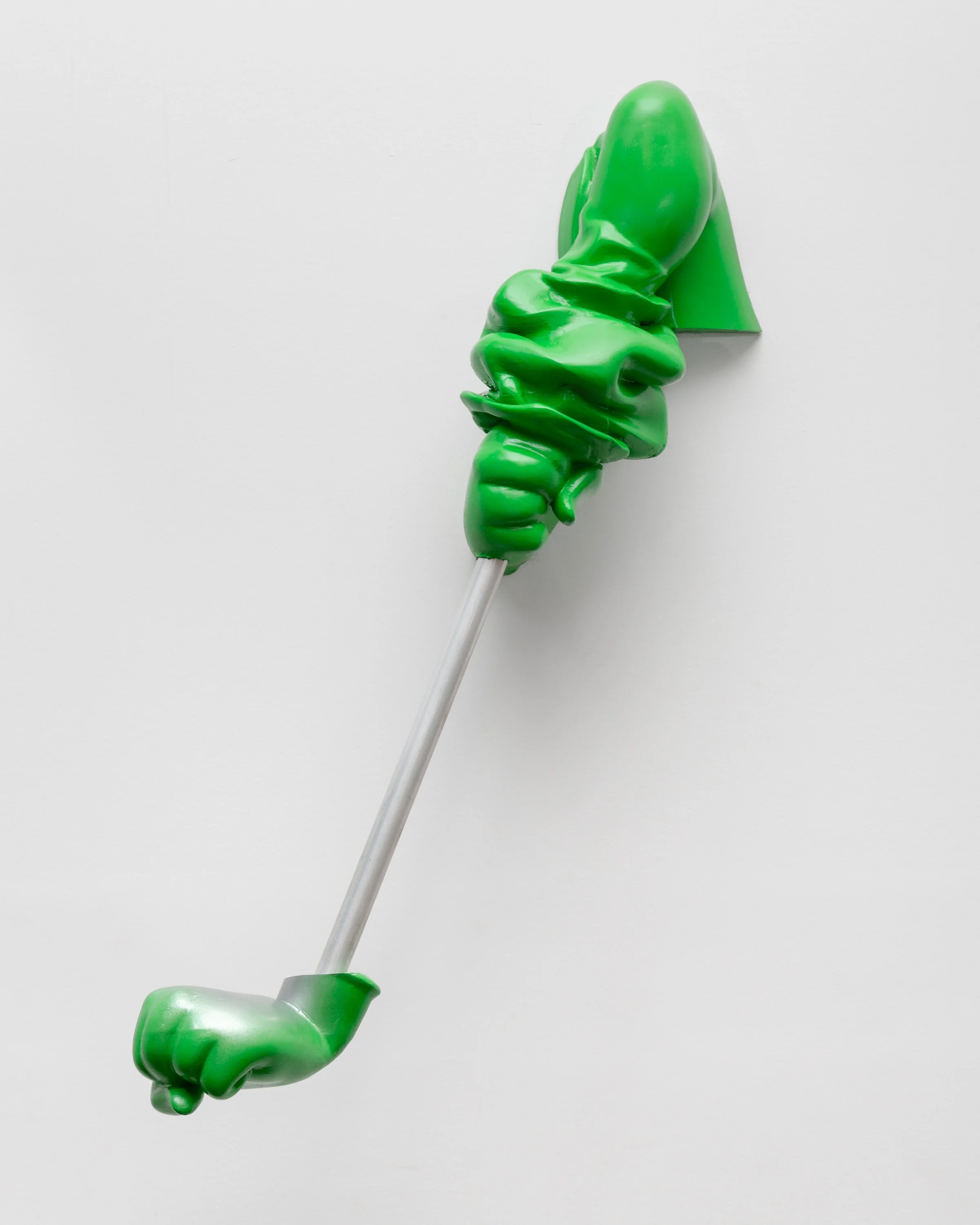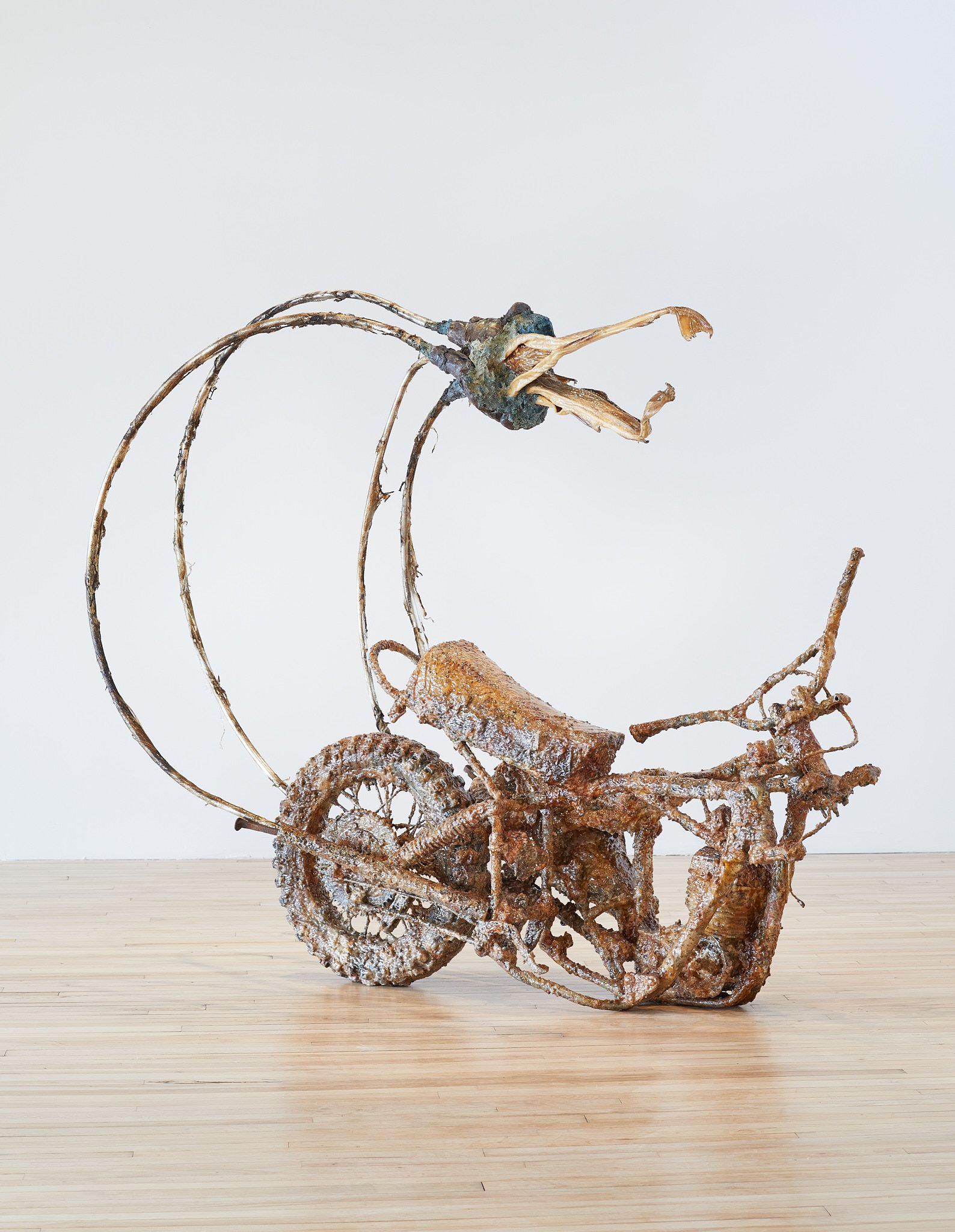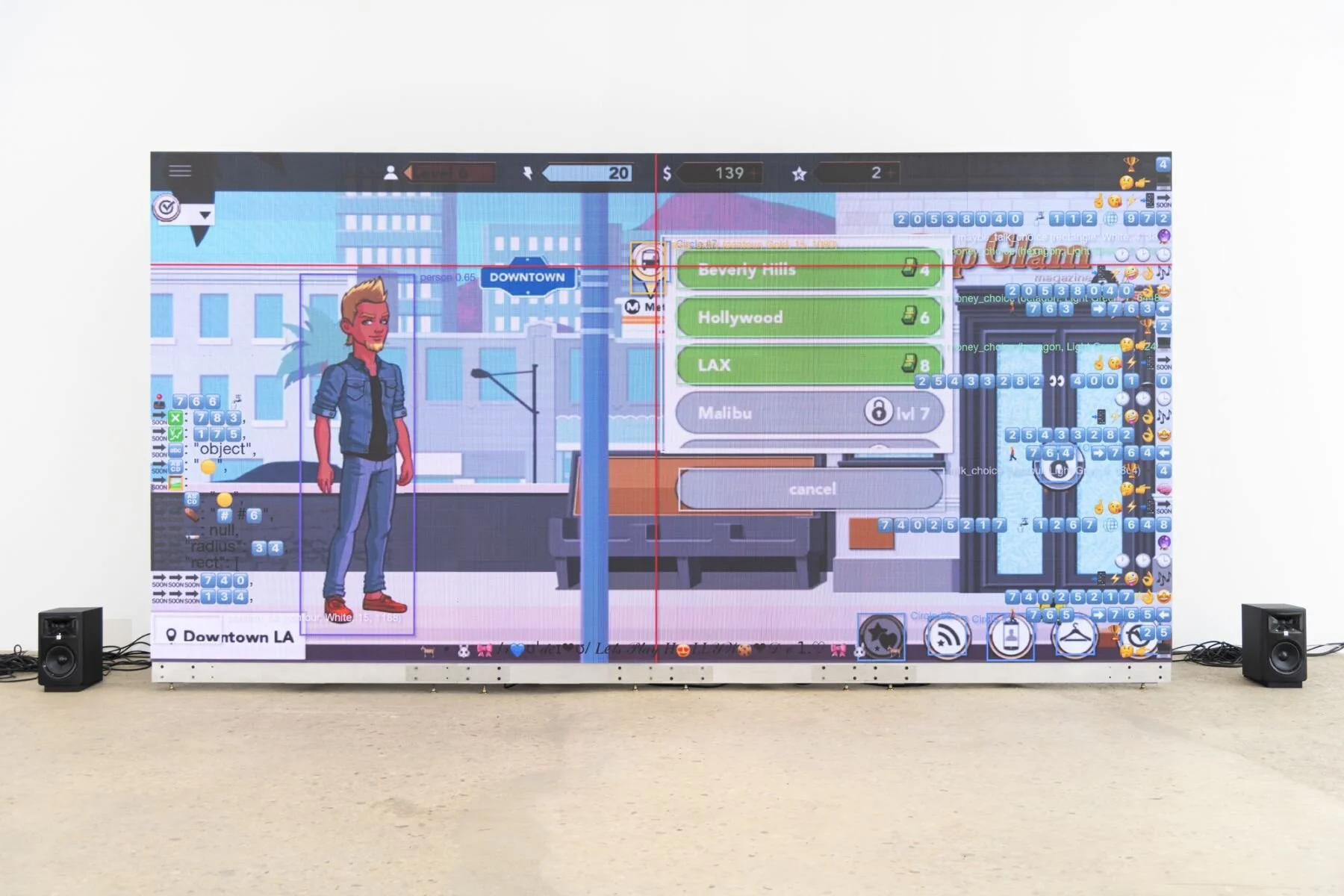Polychrome Presences
Installation view. Photo: Adam Reich. Courtesy of Zürcher Gallery NY/Paris.
A "did you know?" meme often goes viral on social media, informing people that the great Greek and Roman sculptures and friezes, so familiar to us as towering monoliths and edifices of stark marble or bronze, were originally polychromatic. Painted in various colors, these sculptures stood not as monochromatic sentinels but as something more vibrant and, perhaps, relatable. The Agreement: Chromatic Presences, a group exhibition at Zürcher Gallery, presents sculptures by twelve artists using color in various surprising and innovative ways. Curated by William Corwin, the show is dedicated to Lynn Ulmauf (1942-2022) and features work by her, Corwin, and ten other artists: Poppy DeltaDawn, Tom Doyle, Daniel Giordano, Remy Jungerman, Shervone Neckles, Ugo Rondinone, Andrew Ross, Nancy Shaver, Kianja Strobert, and Sun You.
In addition to showcasing a variety of approaches to color in sculpture, I would argue that there is another undercurrent running through this exhibition. Much of the work either responds to or actively attempts to undermine classical and modern aesthetics' mathematical purity. For example, classical marble sculpture inspired the geometric rigor of the Renaissance and the stark minimalism that came to define high modernism. The Agreement presents a shadow side to this vision of art history: one that starts with ancient polychrome sculpture, continues through the decadence of the baroque, and spreads out into a vast field of postmodern potential.
William Corwin, Sutton Hoo, 2022, Hydrocal and acrylic, 78 x 20 x 9.5 in. Courtesy of the artist and Geary Gallery.
William Corwin's contribution to the exhibition, Sutton Hoo (2022), could be read as a tribute to ancient polychromes. Sutton Hoo, an ancient burial site that included an intact fossilized ship, inspired Corwin's boat that is similarly broken and mineralized – cast in Hydrocal plaster and painted with a rainbow of pigments that, unlike those used on ancient timber, have not faded with time.
Tom Doyle, Title Unknown, 1964-65, polychrome wood, steel, wire, 30 x 27 x 36 in. Photo: Cultural Preservation Technologies. Courtesy of Zürcher Gallery NY/Paris.
Tom Doyle's untitled sculpture, standing atop a crate in the gallery's side room, is the oldest work on view, dating from the 1960s. Crafted during the height of minimalism, its form resembles a tripod insect taking flight. Doyle's piece has apparent connections to the trends of its time, but the use of color and its formal complexity distance it from the era's reductive ethos.
Kianja Strobert, Tie, 2017-19, papier mâché, metal lathe, paint. 19 x 9.5 x 3 in. Courtesy of Marinaro Gallery.
Kianja Strobert's three works straddle the boundary between painting and sculpture. They are paintings in that their surfaces are covered in paint; they are sculptures in that these surfaces are topographically far more complex and eccentric than your standard canvas. Made of papier mâché, Tie (2017-19) resembles an attempted Möbius strip – an object with a single surface that can exist in three-dimensional space. Strobert's strip is more complex than the mathematical ideal: its twisted surface is highly textured and coated with glossy blue paint, amplifying every peak and crater under the gallery lights.
Kianja Strobert, Copacabana, 2018-19, papier mâché, metal lathe, paint, wire. 16.5 x 15.5 x 10 in. Courtesy of Marinaro Gallery.
Strobert’s Copacabana (2018-19) looks to be in the process of turning itself inside-out. This invaginating form has a fleshy pink inside-becoming-outside and a botanical green outside-becoming-inside. According to the viewer's perception, the sculpture's interior and exterior are caught in a moment of flux, indefinitely changing.
Lynn Umlauf, February 5, 1988, wire, fiberglass, acrylic, 14 x 40 x 32 in. Courtesy of Zürcher Gallery NY/Paris.
Lynn Umlauf's floor piece, February 5, 1988, also demonstrates a complex interplay of surface – interior and exterior. Wire mesh is warped and twisted into a complex organic-looking shape. Vibrant patches of paint cover the mesh, creeping across it like slime molds or some other amoeboid monstrosity. These forms seem to have fallen through in places, leaving a painted residue on the mesh where they might have once been.
Poppy DeltaDawn, Lucky, 2021, Wool and rafia, 72 x 50 x 5 in. Courtesy of the artist and Zürcher Gallery NY/Paris.
Another piece with similarly complex topography is Poppy DeltaDawn's Lucky (2021). Resembling a model of a chromosome or a plush red ribbon, the piece consists of a coiled cord of yarn intersecting itself, with the point of juncture clad in straw-like raffia fibers.
Sun You, No Title, 2022. Polymer clay, cardboard box, 16 x 12 x 18 in. Courtesy of the artist and Geary Gallery.
Lucky is one of three works in this show in which color does not come in a coat of paint or surface coating but instead absorbed into the medium. The other works, polymer clay forms arranged inside a standard cardboard carton, have been placed towards the top of the box, presenting an illusion of abundance by suggesting layers upon layers of colorful shapes hidden just out of view.
Daniel Giordano, Study for Brother as Cyrano de Bergerac, 2016-2022. Acrylic polymer emulsion, aluminum, artificial eyes, brass, buzzard talons, cattails, ceramic, coconut coir, copper, dock foam, enamel paint, epoxy, food dye, frogs, glass beads, glitter, gourd, gravel, hardware, hosiery, lucky rabbit's feet, makeup foundation, marzipan, my hair, nail polish, Northeastern Fast-Dry tennis court surface, paper plates, perlite, permanent ink, Peter Eide painting (Huggable Snuggle Butter, 2020, acrylic on bath towel, 39.5 x 36 inches and Untitled, 2020, acrylic on bath towel, 60 x 48 inches), pigment, pizzelles, plastic bag, plastic beads, pomade, PVC primer, rubber, shellac, silicone, snowglobe, steel coat hanger, synthetic rope, Tang drink mix, tennis racquet grommets, tennis racquet string, thread, vinyl, water chestnut, 78 x 18 x 48 in. Courtesy of the artist and Zürcher Gallery NY/Paris.
Labeling Daniel Giordano's sculptures as "mixed media" would significantly disservice the work. Each piece's materials list tells a story: many of the artist's unconventional media aren't readily apparent in the finished work but are vital for understanding his work as a whole. In Study for Brother as Cyrano de Bergerac (2016-2022), a particular brand of tennis court surface coating, along with racquet grommets and string, points to the artist's history as a semi-pro tennis player. Much like David Foster Wallace, another tennis player-turned-maximalist, Giordano throws everything into his work, particularly his own life. Cyrano contains pieces of two paintings by Giordano's friend Peter Eide, though obscured. Like a baroque reliquary housing a saint's bones, hair, or teeth, Giordano's sculptures are imbued with meaning by the bits of material he adds to them.
Andrew Ross, Fight Loop Sconce, thermoplastic, epoxy coating, polyurethane, paint, 46 x 36 x 12 in. Photo by Daniel Terna. Courtesy of the artist and Zürcher Gallery NY/Paris.
Andrew Ross's sculptures also draw from his life and interests. A dweller of the weird side of the internet, his work is informed by memes and conspiracy theories, and he sources some of his material from public domain 3D models that he then manipulates. For example, right-wing Pepe memes apparently inspired Fight Loop Sconce (2021). With its green sleeve rolled up, the arm is just a metal pole supporting a plastic fist, a Hulk hand with no actual muscle behind it. Ross’s The Mic is Mightier Than the Pen contains a head that resembles that of an orc miniature from Warhammer, albeit blown up and made physically through a CNC router or some other automated fabrication process. A pile of cathode-ray tubes accompanies the head, some propped up and held in place with sticks. The entire piece, coated with a pearlescent pigment, recalls the color schemes of vaporwave videos and album covers.
Andrew Ross, The Mic is Mightier Than the Pen, 2019, EPS foam, Aqua resin, pigment, PLA plastic, 27 x 30 x 50 in. Courtesy of the artist and Zürcher Gallery NY/Paris.
Vaporwave seems to be an appropriate point to end on: classical marble statues, for whatever reason, frequently appear on the aesthetics' album covers and other associated imagery. Like many contemporary retro movements, Vaporwave looks back at the past and grabs arbitrary fragments for remixes, whether from 80s graphic design, 90s Weather Channel smooth jazz, or classical sculpture. For the artists in The Agreement, the selection of fragments isn't necessarily arbitrary. Material and color can bear significant personal or societal meaning, standing against the modernist expectation that a work of art must be somehow self-contained, untethered to concerns about the wider world. The eccentric surfaces of these sculptures emit color and personality, two critical aspects that the ravages of time and modernist ideology erased from classical sculpture.
The Agreement: Chromatic Presences
Curated by William Corwin
April 2 to May 11, 2022
Zürcher Gallery
33 Bleecker Street, New York NY 10012




